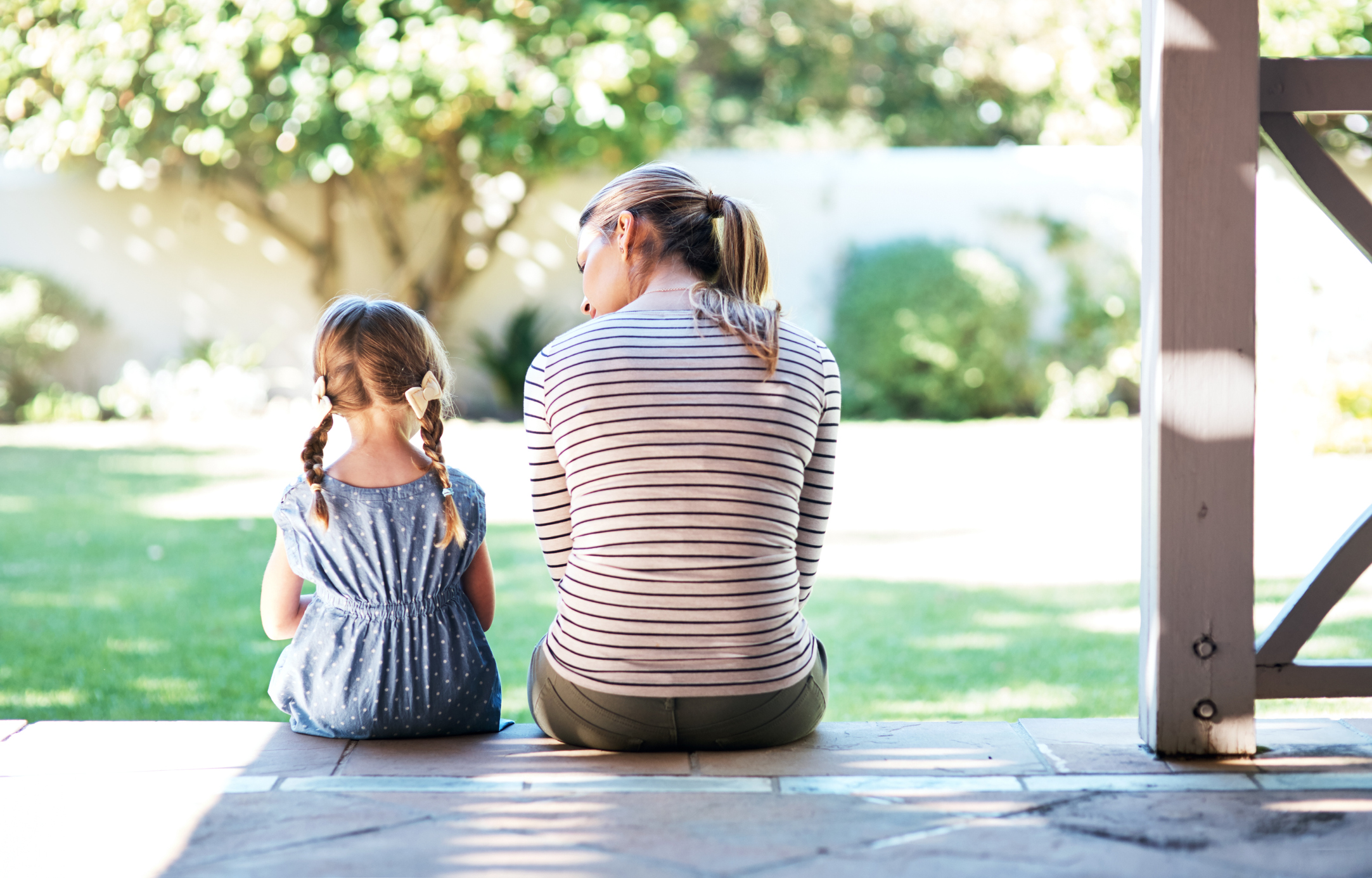Welcome to the ultimate guide on using Dan Hughes’ PACE with children. Parenting is a complex journey, and it can sometimes be challenging to navigate through the ups and downs of raising children. However, with the PACE model developed by renowned psychologist Dan Hughes, parents have access to a powerful tool that can transform their relationship with their children.
In this blog post, we will delve into the basics of Dan Hughes’ PACE model and explain how it can be implemented in your parenting journey. We will explore the four fundamental elements of PACE – Playfulness, Acceptance, Curiosity, and Empathy – and discuss their importance in fostering healthy child development.
Understanding PACE and its significance is just the first step. We will provide you with a step-by-step guide on how to implement each element of PACE in your daily interactions with your children. From incorporating playfulness into your routines to cultivating acceptance and curiosity, you will learn practical strategies to strengthen your bond and create a nurturing environment for your child.
Difficult situations are part of parenting, and PACE can be a valuable tool in these moments. We will explore how to apply PACE during emotional outbursts, conflicts between siblings, and handling rejection. By applying PACE in these challenging situations, you can help your child regulate their emotions, resolve conflicts, and build resilience.
While the benefits of using PACE are immeasurable, it’s important to acknowledge the challenges parents may face when implementing this model. We will discuss these challenges and provide you with tips to overcome them, empowering you to make the most of your PACE journey.
To illustrate the transformative power of PACE, we will share real-life case studies showcasing the success stories of parents who have used PACE with their children. These stories will highlight how PACE has improved emotional regulation, enhanced the parent-child bond, and facilitated conflict resolution and improved communication.
In conclusion, this ultimate guide will recap the importance and benefits of using Dan Hughes’ PACE with children. By embracing the principles of playfulness, acceptance, curiosity, and empathy, you can create a nurturing and supportive environment that promotes your child’s emotional well-being, resilience, and overall development.
Join us on this journey as we explore the world of Dan Hughes’ PACE and discover how it can revolutionize your parenting experience. Get ready to transform your relationship with your child and unlock the full potential of their growth and development. Let’s dive in!
Understanding the Basics: Introduction to Dan Hughes’ PACE Model
Dan Hughes’ PACE model is a therapeutic approach that focuses on building secure and healthy relationships between parents or caregivers and children. PACE stands for Playfulness, Acceptance, Curiosity, and Empathy, which are the core elements of this model. By incorporating these elements into their interactions with children, parents can create a safe and nurturing environment that supports emotional regulation, attachment, and overall development.
What Does PACE Stand For?
PACE is an acronym that represents the four fundamental elements of Dan Hughes’ model:
- Playfulness: Playfulness involves incorporating fun, humour, and joy into interactions with children. It encourages spontaneity, laughter, and shared enjoyment, creating a positive and engaging environment.
- Acceptance: Acceptance means embracing and valuing children for who they are without judgment or criticism. It involves acknowledging and validating their emotions, thoughts, and experiences, fostering a sense of self-worth and acceptance.
- Curiosity: Curiosity involves being genuinely interested in understanding a child’s perspective, thoughts, and motivations. It encourages open-mindedness, exploration, and a desire to learn more about the child’s unique experiences and inner world.
- Empathy: Empathy is the ability to understand and share the feelings of another person. It involves recognizing and validating a child’s emotions, demonstrating understanding and care, and providing support and comfort.
Importance of PACE in Child Development
Dan Hughes’ PACE model is rooted in attachment theory and recognizes the critical role of secure attachment in a child’s development. When parents or caregivers consistently incorporate PACE elements into their interactions, it promotes emotional regulation, cognitive development, and the formation of secure attachment bonds.
By being playful, parents create a sense of safety and enjoyment that allows children to explore, learn, and develop their social and emotional skills. Acceptance helps children develop a positive sense of self-worth and fosters healthy self-esteem. Curiosity encourages children to express themselves, share their thoughts and feelings, and develop a sense of autonomy. Empathy builds trust, strengthens the parent-child bond, and helps children feel understood and supported.
The PACE model also emphasizes the importance of repairing ruptures in the parent-child relationship. When conflicts or misunderstandings occur, repairing and reconnecting using the elements of PACE can restore trust and strengthen the attachment bond.
How to Implement the ‘P’ in PACE: Playfulness
Playfulness is a powerful tool for connecting with children and promoting their well-being. Incorporating playfulness into everyday interactions can enhance engagement, communication, and cooperation. Parents can use humour, silliness, and playfulness to create a positive and enjoyable atmosphere that encourages participation and minimizes stress.
In the next section, we will explore practical strategies for implementing playfulness in your parenting, including the use of games, imaginative play, and finding opportunities for shared laughter and joy.
How to Implement the ‘A’ in PACE: Acceptance
Acceptance is the foundation of a healthy parent-child relationship. It involves embracing children for who they are, including their strengths, weaknesses, and unique qualities. Acceptance means providing unconditional love and support, even when children make mistakes or face challenges. It requires parents to set aside judgment and criticism and focus on understanding and validating their child’s emotions and experiences.
In the following section, we will discuss strategies for cultivating acceptance in your parenting, including active listening, validating emotions, and fostering a non-judgmental and supportive environment.
How to Implement the ‘C’ in PACE: Curiosity
Curiosity is a key element in understanding and connecting with children on a deeper level. By demonstrating genuine interest and curiosity about their thoughts, feelings, and experiences, parents can create an environment where children feel valued and understood. Curiosity encourages open communication, active listening, and a willingness to learn from the child’s perspective.
In the subsequent section, we will explore practical ways to implement curiosity in your interactions with children, including asking open-ended questions, active listening techniques, and fostering an environment of exploration and learning.
How to Implement the ‘E’ in PACE: Empathy
Empathy is the ability to understand and share the feelings of another person. It involves recognizing and validating a child’s emotions, demonstrating understanding and care, and providing support and comfort. Empathy plays a crucial role in building trust, promoting emotional regulation, and developing a secure attachment bond between parents and children.
In the final section of this part, we will discuss strategies for implementing empathy in your parenting, including active listening, perspective-taking, and validating a child’s emotions. We will also explore ways to provide comfort and support during challenging situations.
By understanding the basics of Dan Hughes’ PACE model and the significance of each element, you are ready to embark on a journey of implementing PACE in your parenting. In the subsequent sections, we will provide a step-by-step guide on how to incorporate playfulness, acceptance, curiosity, and empathy into your daily interactions with children, empowering you to create a nurturing and supportive environment for their growth and development.
Implementing PACE in Your Parenting: Step-by-Step Guide
Implementing the PACE model in your parenting can have a profound impact on your relationship with your children. In this section, we will provide you with a step-by-step guide on how to incorporate the elements of playfulness, acceptance, curiosity, and empathy into your daily interactions with your children.
Step 1: Setting the Stage
Creating a nurturing environment is essential for implementing PACE in your parenting. Start by setting aside dedicated time for meaningful interactions with your children, free from distractions. This could be during meal times, bedtime routines, or designated playtime. Ensure that both you and your child are in a calm and relaxed state before engaging in PACE interactions.
Step 2: Playfulness
Playfulness is a powerful tool for building connection and fostering positive emotions. Incorporate playfulness into your interactions by:
- Engaging in imaginative play: Encourage your child’s creativity by participating in pretend play scenarios, role-playing, or using props and costumes.
- Using humour and silliness: Incorporate jokes, funny voices, or playful teasing to create moments of shared laughter and enjoyment.
- Introducing games and activities: Play board games, card games, or outdoor activities that promote cooperation, problem-solving, and fun.
Remember, the goal of playfulness is to create a joyful and engaging atmosphere that encourages participation and strengthens the parent-child bond.
Step 3: Acceptance
Acceptance involves embracing your child for who they are and creating a safe space for them to express themselves. Here are some strategies to implement acceptance:
- Active listening: Give your child your full attention when they are speaking, show interest in what they are saying, and validate their thoughts and feelings.
- Validating emotions: Acknowledge and validate your child’s emotions, even if you don’t agree with their perspective. Let them know that their feelings are valid and important.
- Avoiding judgment and criticism: Refrain from criticizing or belittling your child’s actions or ideas. Instead, focus on understanding their perspective and finding constructive ways to address any concerns.
Practising acceptance helps build trust, self-esteem, and a healthy sense of self-worth in your child.
Step 4: Curiosity
Curiosity involves demonstrating a genuine interest in your child’s thoughts, feelings, and experiences. Cultivate curiosity by:
- Asking open-ended questions: Encourage your child to share their thoughts and ideas by asking questions that require more than a simple “yes” or “no” answer.
- Active listening: Be fully present and engaged when your child is speaking. Maintain eye contact, nod, and respond attentively to show that you value their input.
- Exploring their interests: Take an interest in your child’s hobbies, activities, and passions. Learn alongside them and ask them to teach you about their interests.
By being curious, you can develop a deeper understanding of your child’s world and strengthen your connection with them.
Step 5: Empathy
Empathy is crucial for building a secure attachment bond and supporting your child’s emotional well-being. Implement empathy by:
- Validating emotions: Acknowledge and validate your child’s feelings, even if you don’t fully understand or agree with them. Let them know that you understand how they feel.
- Perspective-taking: Try to see things from your child’s point of view. Empathize with their struggles, challenges, and successes.
- Providing comfort and support: Offer physical affection, soothing words, or a listening ear when your child is upset or going through a difficult time.
By demonstrating empathy, you create a safe and supportive environment where your child feels understood and cared for.
Step 6: Consistency and Practice
Implementing PACE in your parenting requires consistency and practice. Make a conscious effort to incorporate playfulness, acceptance, curiosity, and empathy into your daily interactions with your children. Over time, these elements will become natural and intuitive parts of your parenting style.
Remember, every child is unique, and it may take time to find the best approach that resonates with your child’s individual needs and personality. Be patient with yourself and your child as you navigate this journey together.
By following this step-by-step guide and incorporating the elements of PACE into your parenting, you can create a nurturing and supportive environment that fosters your child’s emotional well-being, growth, and development. In the next sections, we will explore how to use PACE in difficult situations and address the benefits and challenges of implementing this model.
How to Use PACE in Difficult Situations
Difficult situations are an inevitable part of parenting, and knowing how to use the PACE model can be incredibly helpful in navigating through these challenging moments. In this section, we will explore how to apply PACE during emotional outbursts, conflicts between siblings, and handling rejection.
Applying PACE During Emotional Outbursts
Emotional outbursts can be overwhelming for both children and parents. However, by using the principles of PACE, you can support your child in regulating their emotions and maintaining a strong connection. Here’s how:
- Playfulness: During emotional outbursts, try to introduce moments of playfulness to diffuse tension. Use humour, silly faces, or engage in a playful activity to redirect your child’s attention and help them shift out of the intense emotional state.
- Acceptance: Rather than trying to suppress or dismiss your child’s emotions, accept and acknowledge them. Validate their feelings by saying things like, “I understand that you’re feeling upset right now. It’s okay to feel that way.”
- Curiosity: Show genuine curiosity about what your child is experiencing. Ask open-ended questions to understand the underlying reasons behind their emotions. This can help them feel heard and encourage self-reflection.
- Empathy: Offer empathy and reassurance during emotional outbursts. Let your child know that you understand how they feel and that you’re there to support them. Provide comfort through physical touch or comforting words.
By applying PACE during emotional outbursts, you can help your child regulate their emotions and strengthen your bond.
Using PACE to Resolve Conflicts between Siblings
Conflicts between siblings are common, and PACE can be a valuable tool in resolving these disputes and fostering healthy sibling relationships. Here’s how you can use PACE in such situations:
- Playfulness: Introduce playfulness to defuse tension and create a positive atmosphere. Encourage siblings to engage in cooperative games or activities that promote teamwork and shared enjoyment.
- Acceptance: Accept both siblings’ perspectives and emotions without taking sides. Validate their feelings and let them know that it’s natural to have disagreements.
- Curiosity: Be curious about each sibling’s point of view. Encourage them to express their thoughts and feelings while actively listening to both sides. This can help in finding common ground and understanding each other’s needs.
- Empathy: Foster empathy between siblings by helping them understand each other’s feelings. Encourage them to imagine how the other sibling may be experiencing the situation and prompt them to find ways to support and comfort each other.
By using PACE, you can facilitate conflict resolution, teach problem-solving skills, and promote empathy and understanding between siblings.
Handling Rejection with PACE
Rejection is a challenging experience for children, and PACE can provide the support they need to navigate through these emotions. Here’s how to handle rejection using PACE:
- Playfulness: Introduce playfulness to create a sense of safety and comfort. Engage in activities or games that help your child divert their attention and build positive experiences.
- Acceptance: Validate your child’s feelings of rejection and let them know that it’s normal to feel hurt. Assure them that their emotions are valid and that you are there to support them.
- Curiosity: Encourage your child to express their thoughts and feelings about the rejection. Ask open-ended questions to understand their perspective and help them process their emotions.
- Empathy: Show empathy and understanding towards your child’s feelings. Let them know that you understand how rejection can be painful and that you are there to provide comfort, support, and guidance.
By using PACE, you can help your child navigate through the difficult emotions associated with rejection, build resilience, and maintain a strong sense of self-worth.
Incorporating PACE into difficult situations empowers parents to support their children’s emotional well-being, promote healthy relationships, and navigate challenging moments with compassion and understanding. In the following section, we will explore the benefits of using PACE and address the challenges parents may face when implementing this model.
Benefits and Challenges of Using PACE
Using the PACE model in your parenting journey offers numerous benefits for both you and your child. However, it’s important to acknowledge that implementing PACE may come with its own set of challenges. In this section, we will explore the positive impact of PACE on child development, discuss the challenges parents may face when using this model, and provide tips to overcome these challenges.
The Positive Impact of PACE on Child Development
- Secure Attachment: By incorporating playfulness, acceptance, curiosity, and empathy, PACE helps foster a secure attachment bond between parents and children. This secure attachment provides a foundation for healthy emotional development, self-regulation, and positive relationships throughout a child’s life.
- Emotional Regulation: PACE supports children in developing emotional regulation skills. Through playfulness, acceptance, curiosity, and empathy, parents can help their children identify and express their emotions, understand the causes behind their feelings, and learn healthy ways to manage and cope with them.
- Self-Esteem and Self-Worth: When parents practice acceptance and empathy, children develop a positive sense of self-esteem and self-worth. Feeling accepted and understood by their parents allows children to develop a healthy self-concept and confidence in their abilities.
- Healthy Communication: PACE encourages open communication between parents and children. By being playful, accepting, curious, and empathetic, parents create an environment where children feel safe to express themselves, share their thoughts, and communicate their needs effectively.
- Conflict Resolution Skills: Implementing PACE helps children develop essential conflict resolution skills. Through playfulness, acceptance, curiosity, and empathy, parents can model and teach their children how to express their needs, listen to others, find common ground, and resolve conflicts in a respectful and constructive manner.
Challenges Parents May Face when Implementing PACE
- Consistency: Consistently incorporating playfulness, acceptance, curiosity, and empathy can be challenging, especially during busy or stressful times. It requires conscious effort and mindfulness to practice PACE consistently in everyday interactions with your child.
- Personal Triggers: Parents may have their own triggers and emotional reactions that can hinder their ability to implement PACE effectively. Recognizing and managing these triggers is essential to maintain a calm and supportive environment for your child.
- Time Constraints: Parenting can be demanding, leaving little time for focused interactions. Finding dedicated time for meaningful PACE interactions amidst daily responsibilities may require careful planning and prioritization.
- Age-Related Challenges: The application of PACE may differ depending on your child’s age and developmental stage. Adjusting your approach to meet the changing needs of your child as they grow can present its own set of challenges.
Tips to Overcome these Challenges
- Self-Care: Taking care of your own emotional well-being is crucial in implementing PACE effectively. Prioritize self-care, seek support when needed, and practice self-compassion.
- Parenting Support: Seek out parenting resources, workshops, or support groups that can provide guidance and encouragement in implementing PACE. Connecting with other parents who are also using the PACE model can be particularly helpful.
- Consistent Practice: Engage in regular practice of PACE, even in small moments throughout the day. Consistency is key in making PACE a natural part of your parenting style.
- Reflection and Growth: Reflect on your interactions with your child, identify areas for improvement, and be open to growth. Recognize that implementing PACE is a learning process for both you and your child.
By understanding the challenges and implementing these tips, you can overcome the obstacles that may arise when using PACE in your parenting journey. The benefits of nurturing secure attachment, supporting emotional regulation, promoting healthy communication, and developing conflict resolution skills make the effort well worth it.
In the next section, we will delve into real-life case studies to illustrate the transformative power of using PACE with children.
Case Studies: Success Stories of Using PACE with Children
In this section, we will explore real-life case studies that highlight the success stories of parents who have implemented the PACE model with their children. These stories demonstrate the transformative power of using playfulness, acceptance, curiosity, and empathy in nurturing healthy parent-child relationships and promoting positive child development.
Case Study 1: Improved Emotional Regulation with PACE
In this case, a parent named Sarah had a 6-year-old son named Alex, who struggled with emotional regulation. Alex would often have intense tantrums and difficulty expressing his emotions in a healthy way. Sarah decided to incorporate PACE into her parenting approach.
By using playfulness, Sarah introduced playful activities and games to help Alex release his pent-up emotions. She would engage in pillow fights, silly dances, and creative play, providing an outlet for his emotions in a safe and enjoyable manner.
Through acceptance, Sarah validated Alex’s emotions, letting him know that it was okay to feel angry or frustrated. She created a non-judgmental space where he could express himself freely.
Curiosity played a significant role as Sarah asked open-ended questions to understand the underlying reasons behind Alex’s emotional outbursts. This allowed her to address any underlying issues or triggers that were contributing to his emotional dysregulation.
With empathy, Sarah provided comfort and support during Alex’s tantrums. She would sit with him, hold his hand, and offer soothing words, letting him know that she understood how he felt.
Over time, Sarah noticed a remarkable improvement in Alex’s emotional regulation. He became better at expressing his emotions and finding healthier ways to cope with them. The implementation of PACE had a profound impact on their parent-child relationship, fostering trust, understanding, and emotional growth.
Case Study 2: Enhanced Parent-Child Bond with PACE
In this case, a parent named Mark had two teenage daughters, Emily and Lily, who were experiencing difficulties in their relationship. They often argued and struggled to find common ground. Mark decided to introduce PACE into their interactions.
With playfulness, Mark initiated family game nights, where they would engage in fun and cooperative board games. This created a positive and enjoyable atmosphere that encouraged laughter and shared experiences.
Through acceptance, Mark acknowledged and validated both Emily’s and Lily’s perspectives, ensuring that they felt heard and understood. He created a space where they could express their thoughts and emotions without fear of judgment.
Curiosity played a crucial role as Mark sought to understand each daughter’s unique interests, hobbies, and aspirations. He engaged in conversations that allowed them to share their passions and dreams, fostering a sense of connection and mutual understanding.
With empathy, Mark offered support and comfort when conflicts arose. He actively listened to both Emily and Lily, recognizing their emotions and helping them find common ground.
As a result of implementing PACE, Mark noticed a significant improvement in the parent-child bond. Emily and Lily developed a deeper understanding and empathy for each other, and their conflicts became less frequent and more easily resolved.
Case Study 3: Conflict Resolution and Improved Communication with PACE
In this case, a parent named Jessica had a 10-year-old son named Ethan, who frequently struggled with conflicts at school and had difficulty communicating his needs effectively. Jessica decided to incorporate PACE into their daily interactions.
With playfulness, Jessica introduced playful activities and games that encouraged cooperation and problem-solving. This helped Ethan develop his conflict resolution skills and learn to approach conflicts with a positive and open mindset.
Through acceptance, Jessica created a safe space for Ethan to express his thoughts and emotions without fear of judgment. She actively listened to him and validated his feelings, helping him develop a sense of self-worth and confidence in his own voice.
Curiosity played a vital role as Jessica asked open-ended questions to understand Ethan’s perspective on conflicts. This allowed her to guide him in finding constructive solutions and alternatives.
With empathy, Jessica provided comfort and support during difficult moments. She demonstrated understanding and care, helping Ethan feel heard and supported.
As a result of implementing PACE, Jessica noticed a significant improvement in Ethan’s conflict resolution skills and communication. He became more confident in expressing his needs, addressing conflicts with empathy and understanding, and finding mutually beneficial resolutions.
These case studies demonstrate the transformative power of using PACE in parenting. Through playfulness, acceptance, curiosity, and empathy, parents can create nurturing environments that foster emotional regulation, strengthen parent-child bonds, and promote healthy communication and conflict-resolution skills.
In the next section, we will conclude this ultimate guide by summarizing the importance and benefits of using Dan Hughes’ PACE with children.
Conclusion: Recap on the Importance and Benefits of Using Dan Hughes’ PACE with Children
In this comprehensive guide, we have explored the importance and benefits of using Dan Hughes’ PACE model in your parenting journey. PACE, which stands for Playfulness, Acceptance, Curiosity, and Empathy, offers a powerful framework for building secure and healthy relationships with your children. By incorporating these elements into your interactions, you can create a nurturing environment that supports emotional regulation, attachment, and overall child development.
We began by understanding the basics of the PACE model, learning what each element represents and its significance in fostering healthy parent-child relationships. We then provided a step-by-step guide on how to implement PACE in your parenting, encouraging playfulness, acceptance, curiosity, and empathy in your daily interactions with your children.
Furthermore, we explored how to use PACE in difficult situations, such as emotional outbursts, conflicts between siblings, and handling rejection. By applying the principles of PACE in these challenging moments, you can support your child’s emotional well-being, promote conflict resolution, and strengthen your bond.
We discussed the positive impact of PACE on child development, including the development of secure attachment, emotional regulation, self-esteem, healthy communication, and conflict-resolution skills. These benefits highlight the transformative power of incorporating PACE into your parenting approach.
However, we also acknowledged the challenges that may arise when implementing PACE, such as consistency, personal triggers, time constraints, and age-related challenges. To overcome these challenges, we provided tips for self-care, seeking parenting support, practising consistency, and embracing reflection and growth.
Finally, we explored real-life case studies that illustrated the success stories of using PACE with children. These stories showcased the positive outcomes of implementing playfulness, acceptance, curiosity, and empathy in nurturing healthy parent-child relationships and promoting positive child development.
By embracing Dan Hughes’ PACE model, you have the opportunity to revolutionize your parenting experience. You can create a nurturing and supportive environment that fosters your child’s emotional well-being, growth, and development. Remember, implementing PACE requires consistency, patience, and self-reflection, but the benefits are immeasurable.
As you embark on your PACE journey, continue to learn, grow, and adapt to the evolving needs of your child. Embrace the elements of playfulness, acceptance, curiosity, and empathy, allowing them to guide your interactions and strengthen your bond with your children.
Congratulations on taking this important step towards becoming a PACE-informed parent. Embrace the power of PACE, and watch as it transforms your relationship with your children, creating a lifetime of love, understanding, and connection.
Related posts:
 Supportive Caregiving: Providing Stability and Structure Through Therapeutic Parenting
Supportive Caregiving: Providing Stability and Structure Through Therapeutic Parenting
 Beyond Surface-Level: Diving Deep into Understanding a Child’s Behaviour
Beyond Surface-Level: Diving Deep into Understanding a Child’s Behaviour
 The Power of Observation: Exploring the Meaning Behind a Child’s Behaviour
The Power of Observation: Exploring the Meaning Behind a Child’s Behaviour
 Building Empathy and Connection: Developing Insights into a Child’s Behaviour
Building Empathy and Connection: Developing Insights into a Child’s Behaviour



